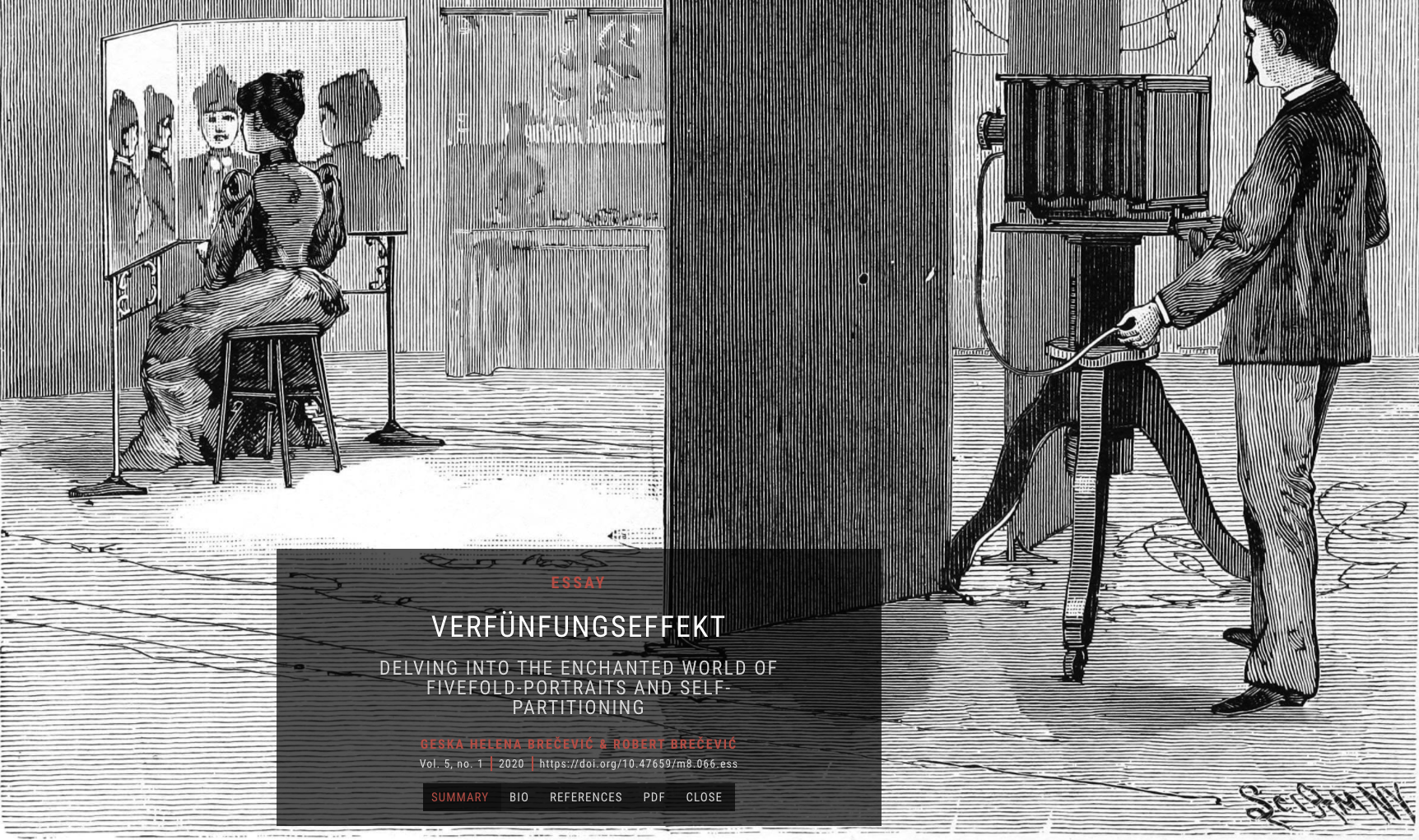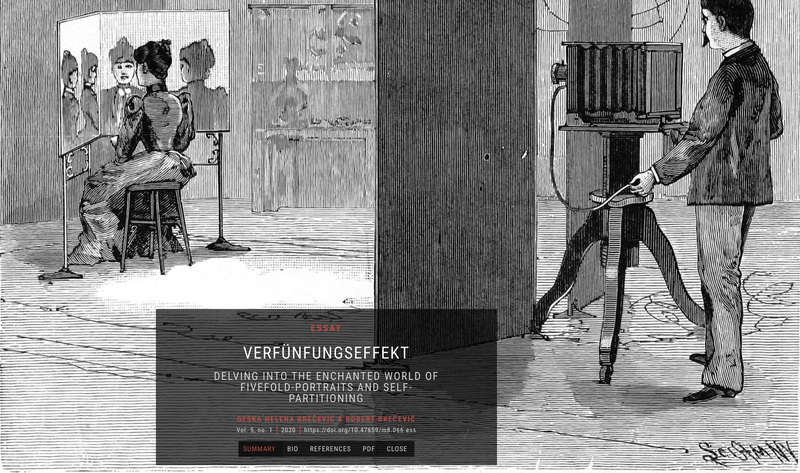
We are happy to once more be published in Membrana, a peer-reviewed journal dedicated to promoting profound, bold and theoretically grounded conceptions of photography. Straddling the space between a scholarly journal and a visually daring publication, Membrana offers an open forum for critical reflection on the medium, presenting both relevant analytical texts and exceptional visual projects. Our contribution to issue #5 2020 on the theme of "magic" deals with our recent video installation Verfünfungseffekt, and describes how we turn the photo-multigraph into a video-multigraph, giving an example of how Media Archaeology as a research method can be extended as a methodology for contemporary art practice.
Discovered during a media-archeological investigation into optical illusions, trick photography, and discarded memorabilia, the photo-multigraph technique opened the door to an enchanted world of cloned appearances orbiting in a self-reflective solar system. Shapeshifting into our preferred artistic medium, this turn-of-the-century photographic technique becomes the video-multigraph. It is bizarrely noteworthy that self-isolation would become not only the subject of the piece, but also – due to the unforeseen spread of a recently mutated virus – the prevailing circumstances under which the work was to be completed. In Verfünfungseffekt, we use the medium of video to create a kaleidoscopic portrait-in-motion where the perspective-shifting shards of ego are recorded in a synchronized performance of solipsist intersubjectivity. The video-multigraph allows for the compositing of tiny offsets in time-shifting delays applied to one, or several, of the mirrored selves – shattering the cloned perfection, as well as the conformity, of the multiple presences. This optical illusion necessitates reflection on how media alters our perceptions of time and space; it thereby arouses wonder about our place in existence.
Keywords: Photo-multigraph, fivefold-portrait, mirror photography, video-multigraph, crisis of presence
